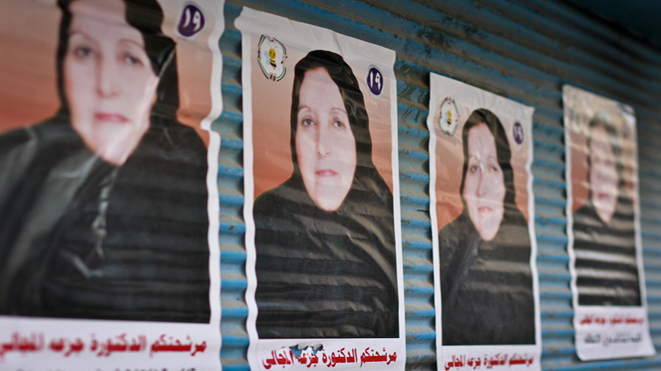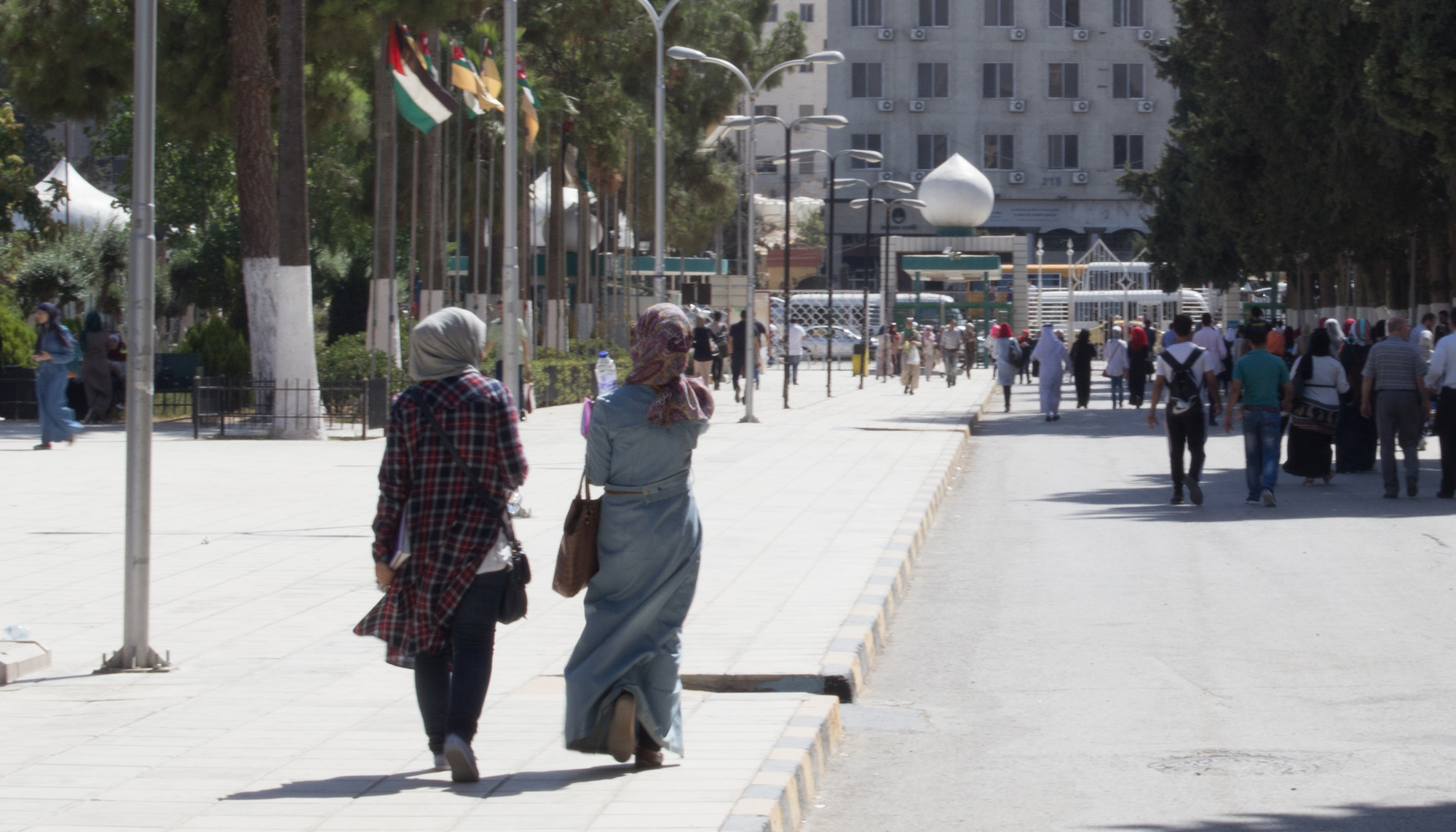By Ola Doudin
After getting a hold of the list of candidates running for this year’s parliamentary elections, I was curious to find out how many women were on it. At a quick glance: in Amman’s districts there are 12 women candidates out of 128, as reported on the Independent Election Committee’s website. This excludes women running on the national lists. It will be interesting to observe how many of these twelve women, if any, will make it to the parliament without the women’s quota. It’s also interesting to see what ideas they’re putting forward in their campaigns and what they would do differently if they make it to parliament. The signs are not very promising. The two candidates I’ve seen in the 5th disctrict have slogans that are beyond cliché and do not represent me as a woman.
2012 was a grim year for Jordanian women, in the constitutional amendments and in different laws and policies. Article 6 in the constitution was not amended to include a clause on gender equality as was promised in 2011, no amendments or progress on changing the citizenship law that prohibits Jordanian women from passing their citizenship to their children, no amendments to the Jordanian labour law or social security law to ensure equality in the workplace and encourage women’s economic participation. Moreover, the last appointed government in 2012 had no women representatives, neither did the Constitutional Court or the Independent Elections Commission. On that the government spokesperson recently said: “We could not find qualified women to be appointed as members of the Constitutional Court.”
At a ratio of 1.03 male(s)/female in 2012 in Jordan, females make up around half of the population; half of the Jordanian population is underrepresented and marginalized in decision-making and worse , the ones who are able to work under the law, have minimal participation in the economy and add very little to the country’s GDP. At a time where the country is going through a difficult economic and political situation, Jordanian women, who are highly educated and qualified, are a major underutilized workforce that should be tapped into to increase the country’s GDP and improve the welfare of their families and communities.
At the same time, Prime Minister Abdullah Nsour encourages Jordanian women to head to the ballot boxes on election day and positively participate in the elections. Very nice indeed. He says in a recent meeting with the Jordanian National Commission for Women (JNCW): “If people do not head to the polls, then the Western media will say that the opposition groups that called for boycotting the elections succeeded and they should rule.” An alarming statement I thought. Should Jordanian women that have been continuously marginalized, and in large numbers, experiencing poverty, discrimination, unemployment, citizenship issues, gender-based violence, cultural pressures and biases, among many other issues, really go vote for a parliament that will not stand to represent, lobby for or advance their causes, just because we are concerned what the western media may say?
I can only see the gap between decision-makers and people widening everyday. Electoral democracy may well not be the way to advance women’s social status in Jordan or in any of the Arab countries that are still undergoing democratic transitions after the Arab uprisings. What we desperately need in Jordan and the Arab world as a whole are concrete and collective grassroots movements based on strong contextualized intellectual principles, and a narrative that stems from and builds on past Arab women movements to advance Arab women’s role and status in their communities and societies; social movements that work from the bottom up on empowering women on all levels, while continuously pressuring and calling for a legal system and constitutional amendments that protect women’s rights. Until then, an elected parliament will do little to serve Jordanian women.







